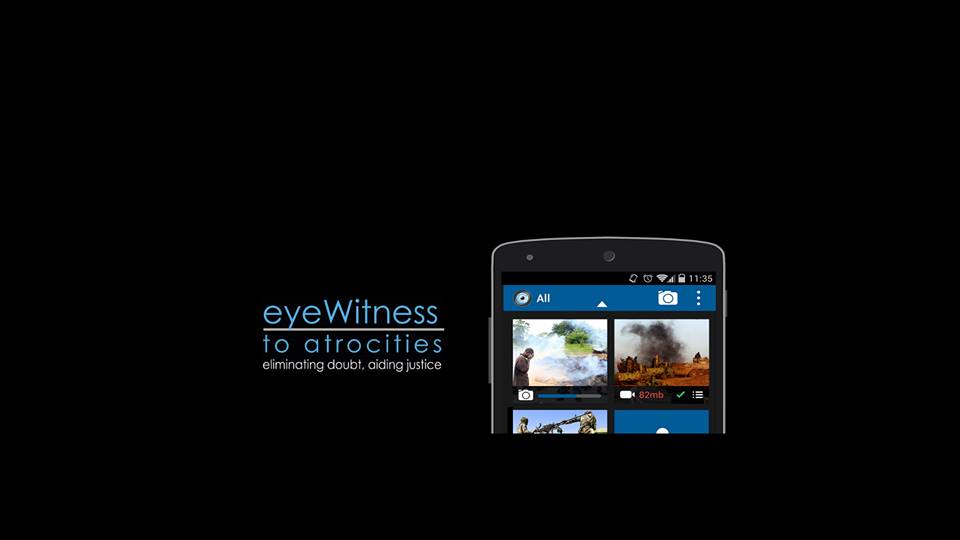Photo by Nakita Cheung
When harrowing footage of alleged Sri Lankan troops executing Tamil prisoners emerged in November 2010, the authenticity of the videos could not be verified despite the gross human rights violations depicted.
This became the catalyst for the creation of an app in 2015 that could capture verifiable footage of international war crimes and use it to prosecute the war criminals responsible for these atrocities.
Today, eyeWitness to Atrocities provides this technology free of charge to those seeking justice for victims of war criminals, genocide and other human rights abuses in some of the world’s worst conflict zones.
While a wealth of information is readily available online for prosecutors to use, challenges continue to exist to confirm the reliability and relevance of digital evidence. Footage documenting criminal acts often lacks the metadata to prove claims of when and where it was recorded.
The app adds a timestamp and the user’s GPS-fixed location to the recorded images and videos, which can then be encrypted and uploaded to the system’s secure databanks from anywhere in the world. Users can submit anonymously to protect their identity and ensure their safety.
Once submitted, the video is stored in a virtual evidence locker, where it can only be accessed by a team of legal experts who analyse the footage and identify appropriate authorities who could investigate the cases further, and – if appropriate – pursue criminal charges.

Check out the video of how the app works.
The app removes the risk of footage being tampered with, which reduces the need for extensive authentication and minimizes the potential for human error in the process.
Despite the innovative nature of the technology, eyeWitness continues to face challenges when trying to ensure that digital materials are accepted as evidence during trials. While the core admissibility principles are fairly consistent across jurisdictions, each country responds to digital evidence differently.
Also, footage of the criminal act itself – regardless of how compelling – must be combined with evidence of the scope of the violations and their association to the the masterminds behind these atrocious crimes.
For example, photos and videos of weapons, uniforms, or the perpetrators can often be more vital to building a case than footage of the violent act itself.
In January 2016, eyeWitness approached TrustLaw to seek assistance with guidelines on the admissibility of digital evidence in jurisdictions where international atrocity crimes are widespread, but the rule of law weakest. The guides were intended to determine the type of videos, photographs and audio evidence that would meet admissibility standards in courts.
Lawyers from Tilleke & Gibbins in Myanmar and D. L. & F. de Saram in Sri Lanka researched cases both in domestic courts and regional bodies related to mass atrocities and similar human rights violations, such as enforced disappearances or extrajudicial killings. They also looked at the prevalence of IT solutions in law enforcement institutions and the judiciary, and how the eyeWitness app could plug potential gaps.
Using the guidelines, eyeWitness was able to adapt its technology to anticipate and better respond to potential defence challenges, which in turn would increase the chances of prosecution.
“eyeWitness faces the unique challenge of needing to understand and respond to the local legal framework in target countries, while having a product general enough for global reach. This challenge is heightened by the fact that digital evidence is an evolving area of law in every jurisdiction”, says Wendy Betts, Director of eyeWitness to Atrocities.
“The legal guidelines gave us a better understanding of the challenges faced by lawyers and activists in different countries and informed our work in expanding the reach and impact of the app. Through pro bono legal assistance, we were able to empower individuals on the ground to seek justice beyond their borders in a more accessible way.”
This story originally appeared on the Thomson Reuters Foundation’s website.
Latest Stories
- What are Plant Based Fibers
- 7 Sustainable and Eco Friendly Floss Options
- Anshul Magotra: How Social Innovation Circle Supports Impact Entrepreneurs
- Causeartist Brief – U.S. Department of Energy x Google, Bezos Centers for Sustainable Protein, Oregon Biochar Solutions
- Evidencity: Pioneering the Fight Against Modern Slavery Through Tech









